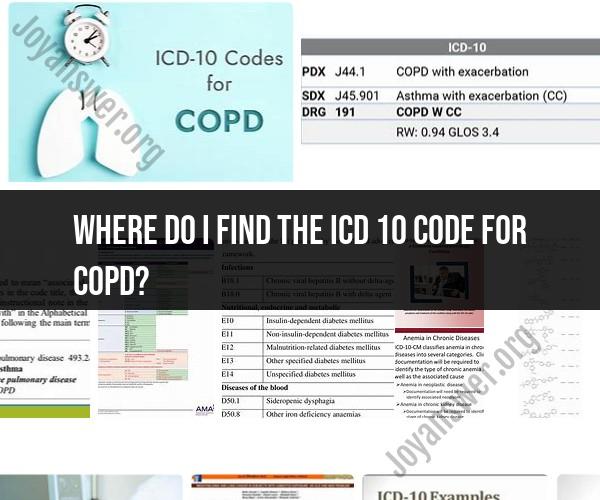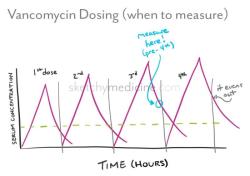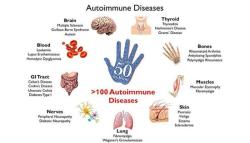Where do I find the ICD 10 code for COPD?
The International Classification of Diseases, 10th Edition (ICD-10), provides specific codes for various medical conditions, including Chronic Obstructive Pulmonary Disease (COPD). To find the ICD-10 code for COPD, you can follow these steps:
Access the ICD-10 Manual: The ICD-10 is a standardized coding system used by healthcare providers and medical coders. You can access the manual in several ways:
- Online resources: There are many websites and online databases that provide access to the ICD-10 codes, such as the World Health Organization (WHO) website or medical coding resources.
- ICD-10 Code Book: If you work in the medical field, you may have a physical copy of the ICD-10 code book. You can find the COPD code within this book.
Navigate to the Respiratory System Chapter: The ICD-10 codes are organized by chapters, and COPD falls under the chapter related to respiratory diseases. In the ICD-10 manual or online resource, locate the section or chapter titled "Diseases of the Respiratory System" or something similar.
Find the Specific Code for COPD: Within the respiratory system chapter, you will find codes for various respiratory conditions. Look for the specific code that corresponds to Chronic Obstructive Pulmonary Disease (COPD).
Note the Code: Once you locate the COPD code, take note of it. The ICD-10 code for COPD can vary depending on the specific type and severity of COPD, so make sure you select the code that best matches the patient's condition.
Verify Accuracy: Double-check the code to ensure it accurately represents the patient's diagnosis. ICD-10 codes can be quite specific, so it's essential to use the correct code to accurately document the medical condition.
ICD-10 codes for COPD typically start with "J44," followed by additional characters or digits that specify the type and severity of COPD. It's essential to select the most appropriate code based on the patient's medical record and the physician's diagnosis.
If you have access to a specific coding software or electronic health record (EHR) system, you can also use search functions to find the ICD-10 code for COPD more quickly. Additionally, healthcare providers and medical coders are trained to use ICD-10 codes accurately, so they can assist in finding the correct code for specific patient cases.
Finding the ICD-10 Code for COPD: A Guide for Healthcare Professionals
To find the ICD-10 code for COPD, you can use the following steps:
- Go to the Centers for Disease Control and Prevention (CDC) ICD-10 code lookup tool.
- Enter the keyword "COPD" into the search bar.
- Select the appropriate ICD-10 code from the list of results.
The ICD-10 code for COPD is J44.9, which stands for "Chronic obstructive pulmonary disease, unspecified." This code can be used for any type of COPD, regardless of its severity or stage.
Coding Chronic Obstructive Pulmonary Disease: ICD-10 Essentials
When coding COPD, it is important to be specific and accurate. The ICD-10 code should reflect the type and severity of the patient's COPD.
Here are some tips for coding COPD:
- If the patient has a specific type of COPD, such as chronic bronchitis or emphysema, use the appropriate ICD-10 code. For example, the ICD-10 code for chronic bronchitis is J42, and the ICD-10 code for emphysema is J43.
- If the patient has more than one type of COPD, use the most specific ICD-10 code that applies.
- If the patient has COPD with an exacerbation, use the ICD-10 code for COPD with exacerbation. For example, the ICD-10 code for COPD with an acute exacerbation is J44.0.
Documenting COPD: Proper ICD-10 Coding for Accurate Medical Records
Proper ICD-10 coding is essential for accurate medical records. Accurate medical records help to ensure that patients receive the correct care and that healthcare providers are reimbursed appropriately.
Here are some tips for documenting COPD in medical records:
- Use the appropriate ICD-10 code for the patient's COPD.
- Be specific and accurate in your documentation.
- Include all relevant information, such as the type and severity of the patient's COPD, the presence of any exacerbations, and any other comorbidities.
By following these tips, you can ensure that your medical records are accurate and complete. This will help to ensure that patients receive the best possible care.












